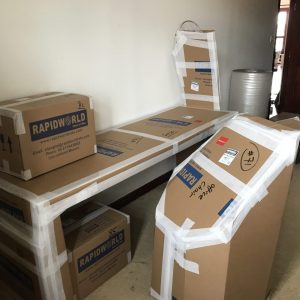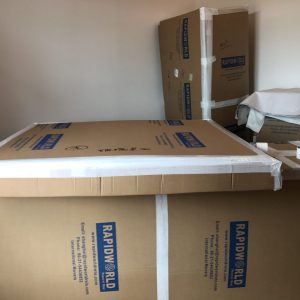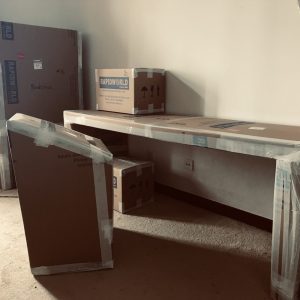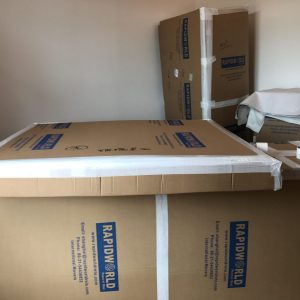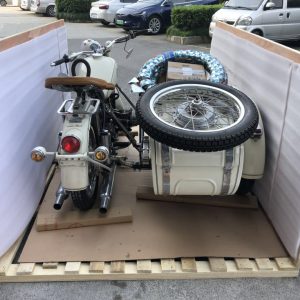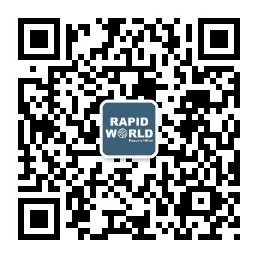Moving from China to Canada? Shipping Furniture & Personal Effects to Canada?
RapidWorld Relocations is a leading international moving company in China with offices in Beijing, Guangzhou and Shanghai.
We have been offering shipping services and removal services in China since 2006. With more than 14 years of experience, we have been shipping furniture and used household effects from China to Canada for more than 100 times.
Submit a quote request, email us or call us at 86-21-5443-6852, and we will get back to you shortly.
Canada is a country in the northern part of North America. Its ten provinces and three territories extend from the Atlantic to the Pacific and northward into the Arctic Ocean, covering 9.98 million square kilometres (3.85 million square miles), making it the world’s second-largest country by total area and the fourth-largest country by land area. Canada’s southern border with the United States is the world’s longest bi-national land border. The majority of the country has a cold or severely cold winter climate, but southerly areas are warm in summer. Canada is sparsely populated, the majority of its land territory being dominated by forest and tundra and the Rocky Mountains. It is highly urbanized with 82 per cent of the 35.15 million people concentrated in large and medium-sized cities, many near the southern border. Its capital is Ottawa, and its largest metropolitan areas are Toronto, Montreal and Vancouver.
Various indigenous peoples had inhabited what is now Canada for thousands of years prior to European colonization. Beginning in the 16th century, British and French claims were made on the area, with the colony of Canada first being established by the French in 1535 during Jacques Cartier’s second voyage to New France. As a consequence of various conflicts, Great Britain gained and lost territories within British North America until it was left, in the late 18th century, with what mostly geographically comprises Canada today. Pursuant to the British North America Act, on July 1, 1867, the colonies of Canada, New Brunswick, and Nova Scotia joined to form the semi-autonomous federal Dominion of Canada. This began an accretion of provinces and territories to the mostly self-governing Dominion to the present ten provinces and three territories forming modern Canada.
In 1931, Canada achieved near-total independence from the United Kingdom with the Statute of Westminster 1931, but at the time, Canada decided to allow the British Parliament to temporarily retain the power to amend Canada’s constitution, on request from the Parliament of Canada. With the Constitution Act 1982, Canada took over that authority (as the conclusion of Patriation), removing the last remaining ties of legal dependence on the British Parliament, giving the country full sovereignty.
Canada is a federal parliamentary democracy and a constitutional monarchy, with Queen Elizabeth II being the head of state. The country is officially bilingual at the federal level. It is one of the world’s most ethnically diverse and multicultural nations, the product of large-scale immigration from many other countries. Its advanced economy is the tenth-largest in the world, relying chiefly upon its abundant natural resources and well-developed international trade networks. Canada’s long and complex relationship with the United States has had a significant impact on its economy and culture.
Canada is a developed country and has the tenth-highest nominal per capita income globally as well as the ninth-highest ranking in the Human Development Index. It ranks among the highest in international measurements of government transparency, civil liberties, quality of life, economic freedom, and education. Canada is a realm within the Commonwealth of Nations, a member of the Francophonie, and part of several major international and intergovernmental institutions or groupings including the United Nations, the North Atlantic Treaty Organization, the G7 (formerly G8), the Group of Ten, the G20, the North American Free Trade Agreement and the Asia-Pacific Economic Cooperation forum.
When it comes to moving to Canada, there is a process that is long established and RapidWorld is able to help you resolve any issues. From arranging visas, finding properties and school places, to helping you decide what to take, packing it and shipping it to your new home, you won’t be alone. Our services cover whole China span including Beijing, Shanghai, Guangzhou, Shenzhen, Tianjin, Wuhan, Hangzhou, Suzhou, Guilin, Guiyang, Xiamen, Jinan, Nanchang, Changchun, Harbin, etc. We can move you to everywhere in Canada including Vancouver, Calgary, Winnipeg, Toronto, Montreal, etc. Here below are some important information regarding moving personal used household goods and effects to Canada. Please feel free to contact us should you have any question.
PROHIBITED ITEMS
The following is not permitted into Canada and if included in shipments will result in seizure of all prohibited items and possible legal penalties against the shipper:
• Baby walkers• Infant self-feeding devices• Jequirity Beans• Lawn Dart with elongated tips• Relight candles• Yo-Yo Balls with long cords
RESTRICTED ITEMS
• Food Items (would incur extensive inspections)• Alcohol Beverages• Firearms (require import permit)
DOCUMENTS REQUIRED
SETTLERS (Immigrants, Student – Visitor -Work visa)
• Copy of passport• Detailed inventories (English/French)• Advice notice/customs manifest – obtained from the moving company in Canada.• Ownership, possession and proof of use.• Receipts for any new items• Previous airport or US/Canada border declaration papers (B4Ee/ B15)• Liquor import declaration (if applicable).• Immigration papers (if applicable)• Landed immigrant application (if applicable)• Visa (if applicable)• Work permit (if applicable)• Letter of undertaking (not always necessary)
RETURNING CANADIANSReturning Canadians will also need to provide the following documents:
• Proof of Residency outside of Canada for at least one year.• Monthly statements, letter from employer, rent receipts, Income Tax
• Previous airport or US/Canada border declaration papers (B4Ee/ B15)
DIPLOMATS• Obligation for privilege to be lodged by the Canadian Ministry of External Affairs• Passport, Packing Inventory
CLEARANCE PROCEDURES
Customs clearance times
| Air Shipments | Surface Shipment (FCL) | Surface Shipment (LCL) |
| 3-4 working days | 5-10 working days | 5-10 working days |
| Above times are estimates only and on the basis that all required documents are available and in order. Actual time for customs clearance may be subject to change. For more information please contact destination office. |
Customs and quarantine procedures
Customs clearance of the shipment requires the presence of the shipper. All shipments must be declared to customs at the port of entry. (i.e. at the airport/U.S Canada border) when the transferee lands in Canada. Transferees are required to declare to the customs that they have an unaccompanied shipment coming from origin country and show the packing inventory with values to the customs officials when they check out from the declaration channel at the airport. Customs will then issue certain documents that are needed for customs clearance. These are called B4e & B15. For the most current information regarding household and personal effects, please go to: http://www.cbsa-asfc.gc.ca/menu-eng.html
Shipments of personal and household effects can be subject to a thorough inspection by the Canadian Food Inspection Agency (CFIA). We do not recommend that you include any food items. Any single item of personal or household effects, including automobiles, that were acquired after March 31, 1977, and are valued at more than $10,000 are subject to regular duty and taxes on the excess amount.
New goods are dutiable and are required to be declared with values.
| Above times are estimates only and on the basis that all required documents are available and in order. Actual time for customs clearance may be subject to change. For more information please contact RapidWorld. |


